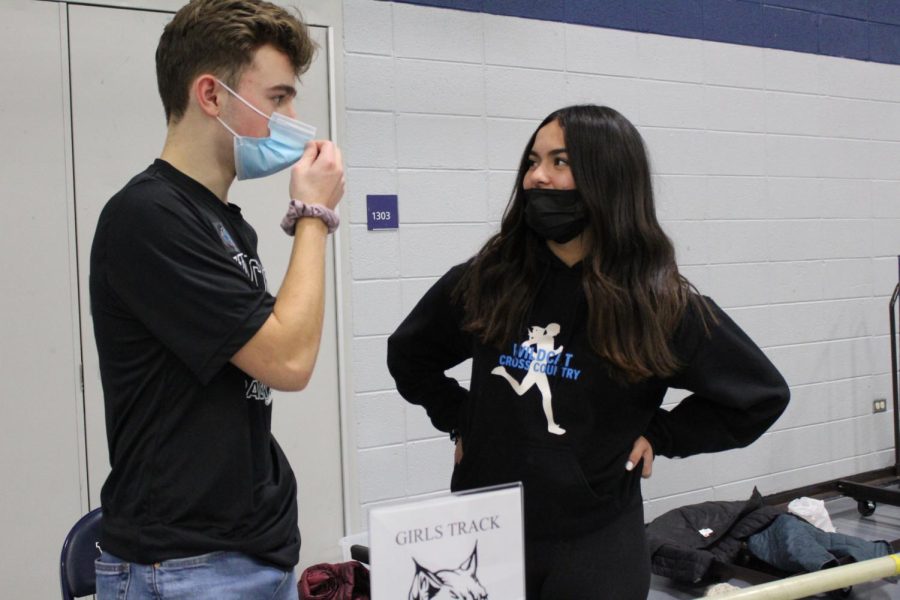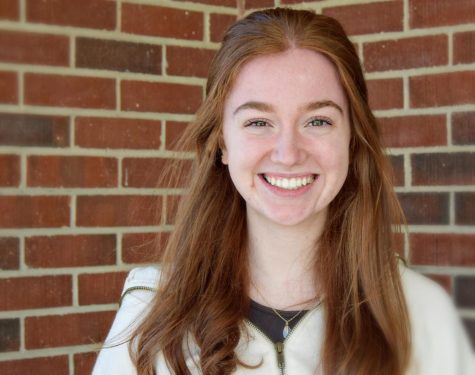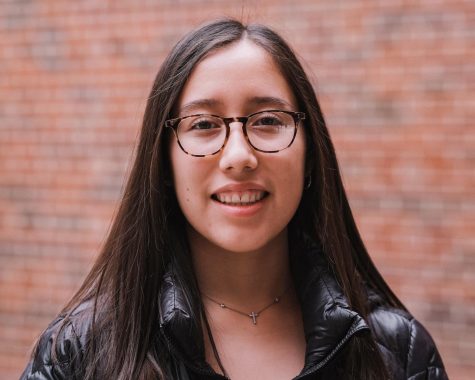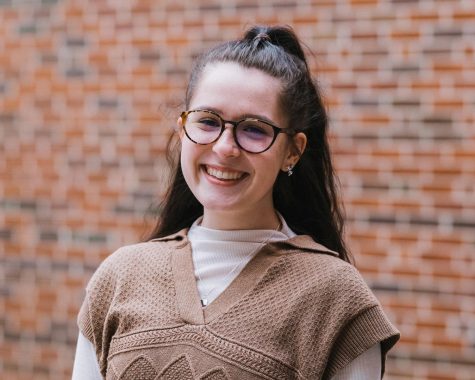Changes to the COVID guidelines at WEGO prompt confusion, discussion
Photo by Yearbook Staff
Some students reported finding it difficult to speak through masks when the policy required they be worn.
February 21, 2022
Updated February 24, 2022 at 10:27 p.m.
On February 17, West Chicago Community High School announced via email it would be dropping the mask requirement as of the next day. Since then, confusion and debate over quarantine length, vaccination requirements, and social distancing have emerged as students and staff adjust to rapid changes in COVID prevention guidelines at the local, state and federal level.
Frequently Changing Guidelines
When COVID-19 first appeared in the United States, extreme actions were taken to prevent its spread, including lockdown in several states. Extreme measures were recommended by the Center for Disease Control (CDC) and World Health Organization (WHO). People started wearing gloves to grocery stores, or wiping down their purchases when they brought them into the house. People also ordered groceries online, and avoided dining in-person.
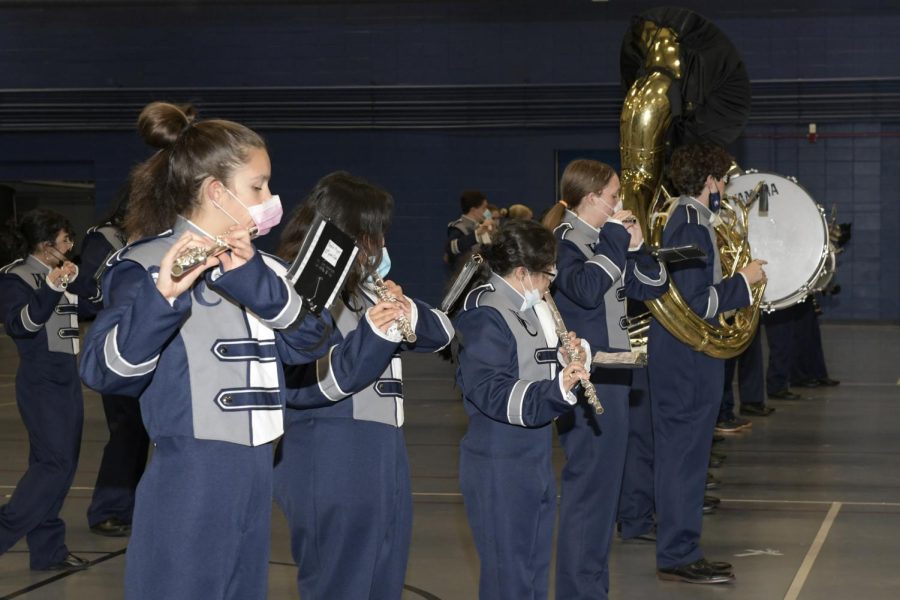
Since then, the guidelines about COVID prevention have changed several times, and West Chicago Community High School has updated its own mitigation strategies to keep students and staff safe. Illinois residents continued to mask in indoor public places per a government mandate – one that was thrown into question on February 4 when Sangamon County Circuit Court Judge Raylene DeWitte Grischow declared Governor J.B. Pritzker had overstepped his authority in mandating masks and quarantine rules.
“Really, it was legislative and legal changes that forced not just our hand, but everybody’s hand,” said WCCHS Principal Dr. Will Dwyer. “So last week, would have been Tuesday the twenty-second, in Springfield, the Joint Committee of Administrative Rules, which is part of the legislative body, and the Governor’s office, they got together and asked for a renewal of the emergency measures for the Illinois Department of Public Health. And that Joint Committee said ‘we’re not going to allow a renewal of this.’ So without that renewal, all the emergency rules through the health department that schools were legally obligated to follow were gone.”
Dwyer said, “I think the anticipation was that the original ruling, from Sangamon County, was going to be overruled. It wasn’t. It was a surprise to everybody. Our legal standing, our current ability to enforce a mask mandate, gone. This was not an administrative decision. It really was a matter of we no longer have legal authority to do the things that we’re doing. In fact, we’re actually in violation of legal precedent now by continuing to require masking.”
“It happened unanticipatedly, and very quickly,” said Dwyer.
Cathy Collins-Clark, the head nurse at WEGO, emphasized that public schools in the area have had to keep up with implementing new guidelines, sometimes weekly, and working directly with the Illinois Department of Public Health (IDPH) and the DuPage County Health Department. With Omicron and possible new variants spreading, the guidelines are frequently updated.
“There was a lot of change when we came back from the winter holiday, [and] that came this school year, when it went from ten-day to five-day. Those updates, it was about a sixty-page document, single-spaced, lots of links, lots of footnotes and references you have to really comb through. So going through that, fully understanding it, but then synthesizing it so that students, faculty, parents, everybody can understand it and how it’s going to change their day-to-day, that’s challenging. So it’s challenging to understand, implement and communicate all the changes that you have to make. We just keep working at it,” said Dwyer.
Collins-Clarke said of the IDPH and DuPage County Health Department, “Guidelines, they pick and choose. You can swim without a mask, but have to be in class wearing one.”
Concerns about swimming through P.E. classes at WEGO were mentioned frequently in interviews with students.
“Those are accommodations that the guidelines absolutely spell out and allow for. So it wasn’t that we’re being inconsistent, we were just using the accommodations in the areas that we needed because the number one outcome of all the guidance, all of the policies, that the state or public health department pushed was full, in-person school. That has been the number one priority for the state of Illinois. So here are the tools, or accommodations at your disposal to make that happen, but also, keep as close to the health guidelines as you can,” said Dwyer.
According to Collins-Clarke, some of the guidelines come from IDPH or the local health department without reasons or explanations, and schools cannot always obtain a firm answer to their questions.
“I do think some of [the guidelines] are ridiculous. If you go on a bus, as long as you have a window open, nobody is close contact. So, this is actually in the guidelines [from the state and local authorities], you have to have a window open, we could all be sitting on top of each other, and they’re telling me that I don’t have to worry about close contact and it literally says it’s because you have a window open. There’s no science behind it,” said Collins-Clarke.
Dwyer said, “We’re still looking for some guidance at the state-level. What’s out of bounds now, for schools to do or not do? And the big questions really come with the exclusions. What’s our authority to exclude a student from school who might be COVID-positive or symptomatic? Those things are getting worked out.”
While the last three weeks have resulted in a number of shifting guidelines, some of which remain unclear in terms of legality and implementation in schools, Dwyer stressed how impressed he was with the willingness of students, faculty and parents to comply with the changes.
“I just appreciate everyone’s cooperation and understanding as we navigate through this next layer. Things were one way, they’re shifting, they’ll probably shift again. So then we’ll just have to communicate and be ready for what those changes,” said Dwyer.
Mask Debate
February 18 marked the first day students were able to attend school without a mask since March 2020. While a majority of students and staff continued to wear a mask in the building, the effectiveness of masks remained a point of debate.
Collins-Clarke said, “I don’t know, with Omicron, if masks are really stopping it because people are still getting it.”
“I think it took us a long time to get back to in person and [I] honestly think that wearing a mask, it’s not a big sacrifice, it’s not a difficult thing to do, for seven hours of the day,” said junior Ema Tomasevic.
Safety in schools has been a chief concern when it comes to a pandemic: nearly 93% of all households with children reported their students engaged in some type of remote learning, one strategy put in place to prevent COVID, in 2020. However, safety, to some, does not necessarily mean masking. Choir Director Brandon Fantozzi said that the school, CDC, and IDPH have all emphasized masks to prevent sickness, but “now you’re starting to hear research that’s contrary that masks don’t really affect you getting COVID or not. I’d rather be safe than sorry, but I don’t know if they actually work.”
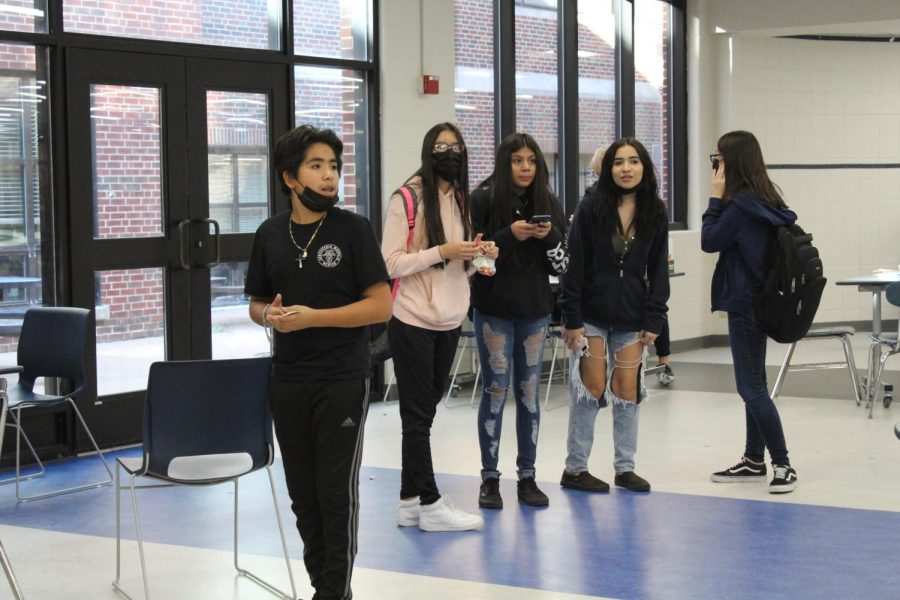
Students reported that teachers and staff were not always able to enforce the mask mandate at West Chicago Community High School prior to February 18.
Senior Jaclyn Camp said, “Even though cases are improving, compared to last year, I always [saw] kids without masks on. The rules [weren’t] enforced as much by security guards or teachers.”
“I definitely think there were teachers who tried their best to get kids to wear their masks, and they just didn’t listen,” said junior Phoenix Passini.
Dwyer said, “If you don’t wear a mask, should I, in light of the last year and a half, send kids home for that? Probably not. I don’t think kids out of school is the right answer. The only challenge presented by this is the same challenge with any rule with two thousand teenagers. It’s that, one, we’re not going to be all places at all times, constantly over your should saying, ‘Put your mask on.’ That will wear everybody out, and create a lot of animosity in the school. Two, it’s got to be something that, as a student body, or as a community, or as a society, that people have the willingness to comply with that rule.”
Dwyer added that compliance with the mask requirement at WEGO was something he “felt very good” about, though “it was never going to be one hundred percent.” He explained that students’ willingness to follow the masking policy in school was not dissimilar to customers’ willingness to comply in grocery stores: both have waned in recent months.
CDC Continues to Recommend Vaccinations
Pfizer , Johnson & Johnson, and Moderna all offer vaccines designed to combat the effects of COVID-19.
Dwyer said, “Last year we had a big vaccine push to give kids the opportunity to get vaccinated here. Still, obviously, anybody who wants to get vaccinated, we think it’s a very appropriate mitigation strategy.”
As of February 2022, the CDC guidelines recommend people get a COVID vaccine and stay up-to-date with boosters. COVID-19 vaccines “are effective at protecting people from getting seriously ill, getting hospitalized, and even dying. As with vaccines for other diseases, people who are up to date are optimally protected.” The CDC currently suggests anyone over the age of 5 be vaccinated.
However, many health organizations and hospitals have warned that vaccination is less effective at preventing the spread of the Omicron variant than previous strains. According to the University of Iowa Hospitals and Clinics, “Initial reports show that receiving only one or two doses of an mRNA vaccine, like the Pfizer-BioNTech or Moderna vaccines, does not reduce the likelihood of infection against omicron as much as it does against previous variants.”
The CDC concurs, explaining that no vaccine is 100% effective at preventing infection. However, vaccination may protect people “from getting infected and severely ill, and significantly reduce the likelihood of hospitalization and death.”
“Does it prevent [COVID]? Not at all. Because I am getting as many vaccinated who get positive tests as non-vaccinated. It will just lessen the symptoms,” said Collins-Clarke.
Fantozzi echoed Collins-Clarke’s views, stating that while he does believe that the vaccines diminish the effects on the people who get COVID, they are not a prevention of the disease altogether. Fantozzi has been vaccinated, but did get COVID over winter break.
“This is, once again, something like the flu, where it is all about a guess, and if we guess right, then no one gets the flu, but if you guess the wrong strain, even if you got the flu shot, you can still get the flu,” said Fantozzi.
Decreasing Cases, Healthy Practices
According to The New York Times, which publishes up-to-date statistics on COVID cases across the country, DuPage County saw 256 new cases on February 18, and 302 cases across a 7-day average 302.
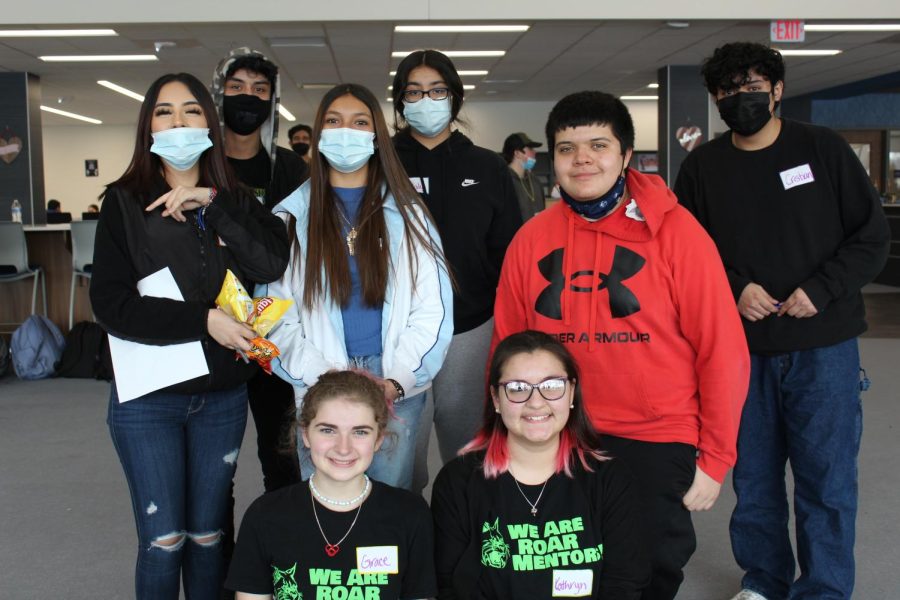
While remnants of social distancing signage do remain around the school, students are no longer required to sit 6 feet apart in their classes.
“We are trying to social distance whenever appropriate and possible, like we have been all year,” said Dwyer.
Camp said, “I feel like our school is so concentrated with kids, it’s hard to maintain social distance guidelines. It’s uncomfortable at times.”
Still, some COVID mitigation strategies remain in place at WEGO. Students experiencing symptoms like a cough, moderate to severe headache, and fever of 100.4 or higher will be sent home. If a student or staff member tests positive, there is a 5-day quarantine, with or without symptoms.
The CDC continues to promote wearing a mask, keeping 6 feet away from others, avoiding poorly-ventilated spaces or crowds, testing to prevent spreading COVID to others, washing hands often, and covering coughs and sneezes.
“We still are strongly encouraging masking. We still are encouraging and making it easy to have hand hygiene. We also, because of the construction updates, going back two years now, our HVAC – so the way that air circulates through the building – we’re circulating air well-above the CDC recommended rate to replace the air in a given classroom in a given period of time,” said Dwyer.
Voluntary COVID-testing also remains available on school property for students who display symptoms.
Collins-Clarke also emphasized hand washing is one of the best strategies to prevent the spread of COVID and other illnesses. She urged students to maintain a healthy lifestyle with plenty of sleep, a balanced diet, and exercise.
“Hydrate, hydrate, it does actually help!” said Collins-Clarke.



